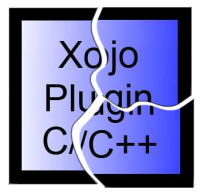

#Xojo 2015 code
It then became the favoured language for home computers during the 80's during the boom in the market with most home computers having a BASIC interpreter either built in or available as a cartridge add-on (notable exception being the Jupiter Ace, which used Forth).Īt that time, the language was fairly limited in what it could do, and the structure of the language also meant that without careful planning, the code could become rather unwieldy and unmanageable.
#Xojo 2015 software
It was originally design in 1964 as an easier language for non-programmers to be able to create software for mathematics and scientific pursuits. This does not mean that is is only for beginners any more. BASIC, for those that don't know, is an acronym for Beginners All-puporse Symbolic Instruction Code.

Xojo, in my opinion, is an evolution of the BASIC language.

Some people think that I should not refer to the underlying language of Xojo as BASIC, and that is a fair point, it is no longer strictly BASIC, but it does have it's roots in the language.

However, there is one thing that has been mentioned a couple of times that I would like to address, and I want to do it here as it could possibly clarify what I said before. Most of it has been very positive, and I am grateful to the responses and subsequent discussion that has arisen. Since my last post, there has been a discussion on the Xojo forums about the things I said. Sub Push(Extends ByRef s As String, Value As String) Although it is not possible to subclass the intrinsic data types in Xojo, we are able to extend then, adding methods as we would for a class.įirst off, I'll show you the Pop and Unshift methods: I didn't want to create a subclass the string type (in fact, Xojo won't allow you to do that anyway), so I decided to extend it, with the Extends keyword (as I showed in Extending The Date Class). So, I took this and applied to to the string type in Xojo, with a slight enhancement: Push and unshift will add the passed elements (yes, you can pass more than one) to the array, either at the end or the beginning. Pop and shift remove and return the last or beginning, respectively, element in the array whilst also removing that element from the array. In Javascript, we have four methods for adding and removing items from the ends of an array: push, pop, shift and unshift. To make these simple exercises even simpler, I took a leaf out of Javascript's array handling. I like it to be readable, even if I forget to comment. Well, I like simplicity, particularly in my code. S = s.Right(s.Len() - 1) // s now contains "ello World" S = s.Left(s.Len() - 1) // s now contains "Hello Worl"Īnd to get the first character, whilst removing it, we can use: Assumes that s is a string that contains "Hello World" Retrieving and removing the end, or beginning, of a string is a little more complex, but still very straight forward.įor example, to get the last character from a string, and then removing it can be accomplished by: S = n + s // s now contains "!Hello World!" Or to add to the beginning of the string, we can just as easily write: S = s + n //s now contains "Hello World!" n = new value to be added containing "!" s = original string, containing "Hello World" It's a simple process, to add to the end of a string, we use: Like many programmers, I find myself adding and removing characters from either the end or the beginning of strings a lot.


 0 kommentar(er)
0 kommentar(er)
